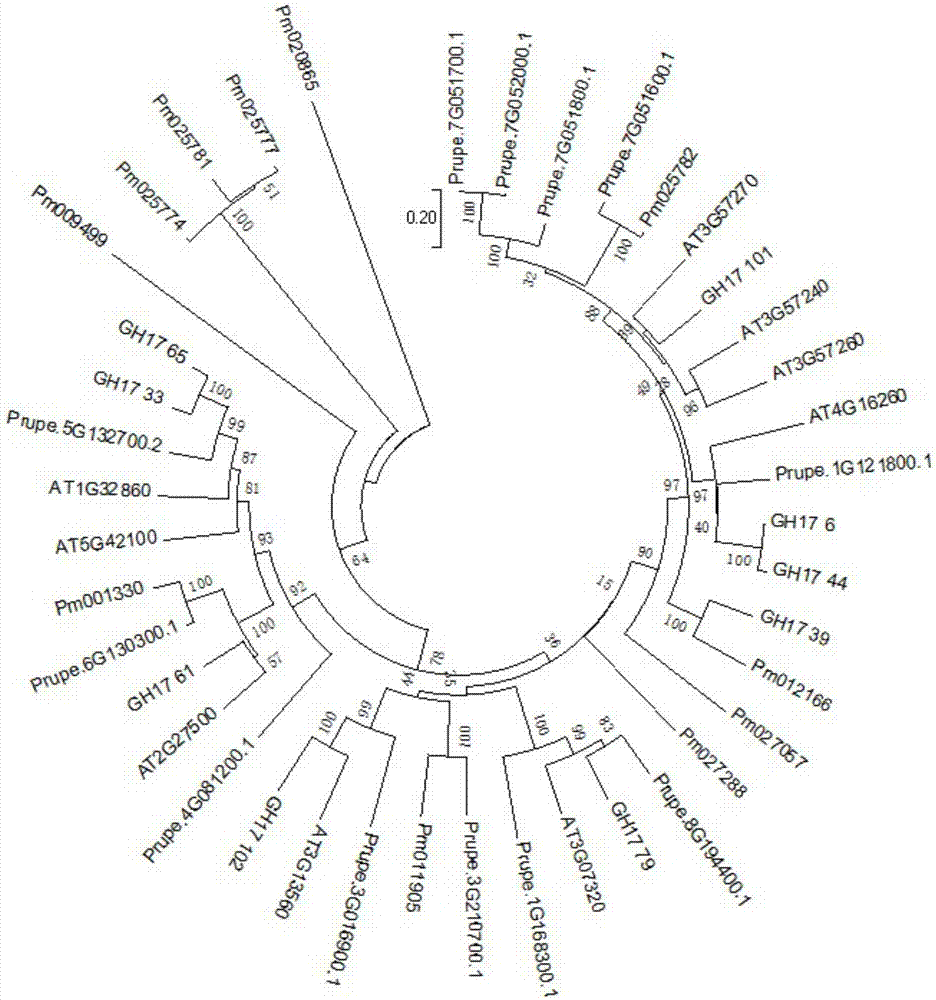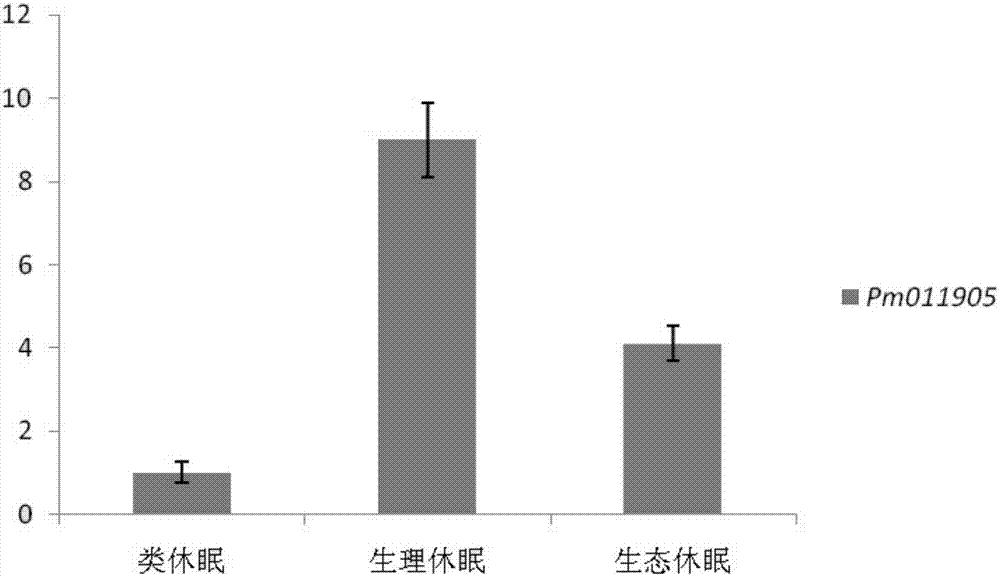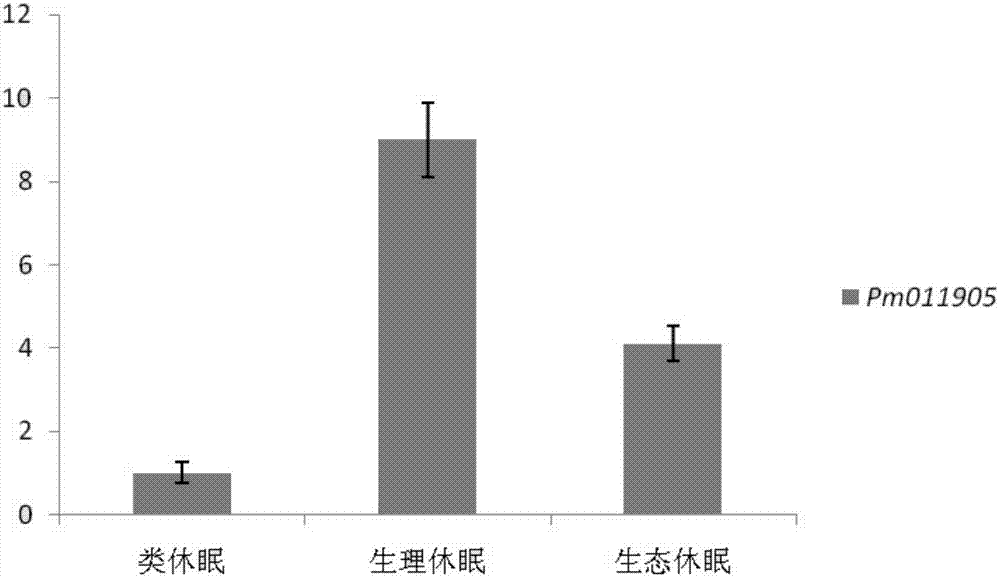Molecular detection method for prunusmume flower bud dormancy state
A dormant state, flower bud technology, applied in the field of molecular biology, can solve problems such as ambiguity
- Summary
- Abstract
- Description
- Claims
- Application Information
AI Technical Summary
Problems solved by technology
Method used
Image
Examples
Embodiment 1
[0029] Materials: Starting from October 15th, every 7 days, the plum blossom branches of the Jiufeng "Green Calyx" variety were collected, 10 branches and about 100 flower buds were collected each time, and they were randomly divided into 3 groups, and each group was counted separately The number of flower buds on the branch.
[0030] Cultivation under artificial conditions: Insert the bottom of the raw paper strips of the year into water, and put them into an artificial climate chamber for cultivation. The artificial conditions are set at 25°C for 16 hours during the day, 16°C for 8 hours at night, and the humidity is 70%. The bottom was subtracted every 2 days, and the germination of flower buds was observed every day. After 10 days of cultivation, the number and germination rate of flower buds in each group were recorded respectively.
[0031] Germination rate statistics: According to the germination rate and the time required for germination, determine the dormant state of...
Embodiment 2
[0045] Flower bud samples were collected on November 1st and 8th, and RNA extraction, cDNA reverse transcription, and qPCR quantitative analysis were performed on them. The expression level of No. 1 is only 2% (less than 10%) higher than that of No. 1, which shows that the flower buds of No. 1 and No. 8 are in the quasi-dormant stage. In order to verify the results, the branches of No. 1 and No. 8 were hydroponically cultured, and it was found that the germination rate was only 0%, which also met the definition of quasi-dormant proposed by Lang.
[0046] Flower bud samples were collected on December 10th and 18th, and RNA extraction, cDNA reverse transcription, and qPCR quantitative analysis were performed on them. It was found that the expression levels of the Pm011905 gene were very high on the 10th and 18th, and the expression level on the 18th was good. 50% (more than 10%) higher than the expression level of No. 10, it shows that the flower buds of No. 10 and No. 18 are in...
PUM
 Login to View More
Login to View More Abstract
Description
Claims
Application Information
 Login to View More
Login to View More - R&D
- Intellectual Property
- Life Sciences
- Materials
- Tech Scout
- Unparalleled Data Quality
- Higher Quality Content
- 60% Fewer Hallucinations
Browse by: Latest US Patents, China's latest patents, Technical Efficacy Thesaurus, Application Domain, Technology Topic, Popular Technical Reports.
© 2025 PatSnap. All rights reserved.Legal|Privacy policy|Modern Slavery Act Transparency Statement|Sitemap|About US| Contact US: help@patsnap.com



